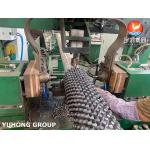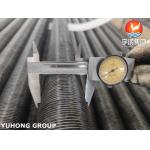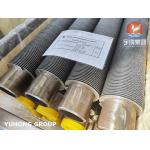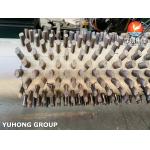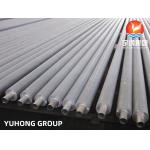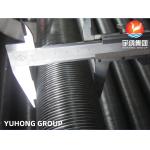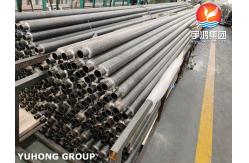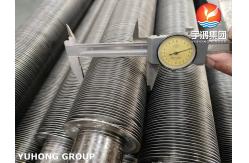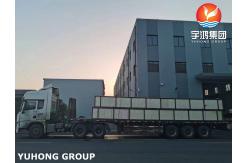ASTM A210 / ASME SA210 Gr. A1 Carbon Steel Fin Tube with Aluminum
Fin (G Type) is a specific type of finned tube used in heat exchangers,
boilers, and condensers. It combines the strength and thermal
conductivity properties of carbon steel with the corrosion
resistance and lightweight nature of aluminum fins. Here’s a
breakdown of its features, applications, and advantages: Key Specifications:Material: - ASTM A210 / ASME SA210 Gr. A1: This refers to a seamless carbon steel tube, which is commonly
used in high-pressure and high-temperature applications, such as
boilers, heat exchangers, and steam systems. This grade has good
tensile strength, weldability, and ductility, making it suitable
for heat transfer applications.
- Aluminum Fins: Aluminum is commonly used for finning because it has excellent
thermal conductivity and is lightweight. The fins are typically
helically wound or attached through mechanical bonding or welding
to the carbon steel tube. The aluminum enhances the heat transfer
efficiency of the tube.
Fin Type (G Type): - G Type refers to a specific profile or design of the fins that are
attached to the tube. These fins may be extruded, helically wound, or stamped. The "G" designation typically indicates a particular geometry,
such as the fin pitch, height, or shape, optimized for particular
heat transfer applications. The fin geometry plays a key role in
increasing the surface area for efficient heat exchange.
Applications:Heat Exchangers: These finned tubes are widely used in various types of heat
exchangers, where heat needs to be transferred efficiently between
two fluids (e.g., in power generation, chemical processing, HVAC
systems). Boilers: The carbon steel tube with aluminum fins is ideal for use in
boiler systems, particularly for economizers, superheaters, and air
heaters, where the tube must withstand high temperatures while
promoting heat exchange. Condensers: Used in condensers for cooling purposes, where the fin tubes help
in improving heat dissipation and efficiency by transferring heat
from the vapor phase to the cooling fluid. Air Coolers & Radiators: Aluminum fins improve the overall cooling efficiency in air
coolers and radiators used in various industrial and automotive
applications. Power Generation: These tubes are also used in power plants for applications where
high-efficiency heat transfer is critical, such as in feedwater
heaters or steam generators.
Advantages:Improved Heat Transfer Efficiency: The combination of carbon steel tubing and aluminum fins
maximizes heat exchange between the fluid inside the tube and the
external environment. Aluminum has a high thermal conductivity,
which improves overall heat transfer efficiency. Corrosion Resistance: While the carbon steel tube provides structural strength, the
aluminum fins offer resistance to corrosion, especially in
atmospheres with moderate humidity and corrosive environments. Cost-Effective: Aluminum fins are relatively inexpensive compared to other
materials, which can help reduce manufacturing costs while still
maintaining good performance in terms of heat transfer and
durability. Lightweight: The use of aluminum fins makes the finned tube system lighter
compared to finned tubes with other materials, which is beneficial
in applications where weight is a critical factor (e.g., in
automotive applications or in areas where transportability is
important). Durability and Strength: The carbon steel tube provides strength and durability, which is
particularly useful in high-pressure or high-temperature
applications, ensuring the system’s longevity.
Typical Manufacturing Process:- Tube Fabrication: The tube is made from seamless carbon steel (ASTM A210 Gr. A1)
and is typically manufactured by extrusion or seamless drawing
processes.
- Finning: The aluminum fins are either extruded or mechanically bonded to the steel tube. In the "G type" design, the fins might be
formed in specific patterns, like helical or spiral winding, to
maximize heat dissipation.
|
